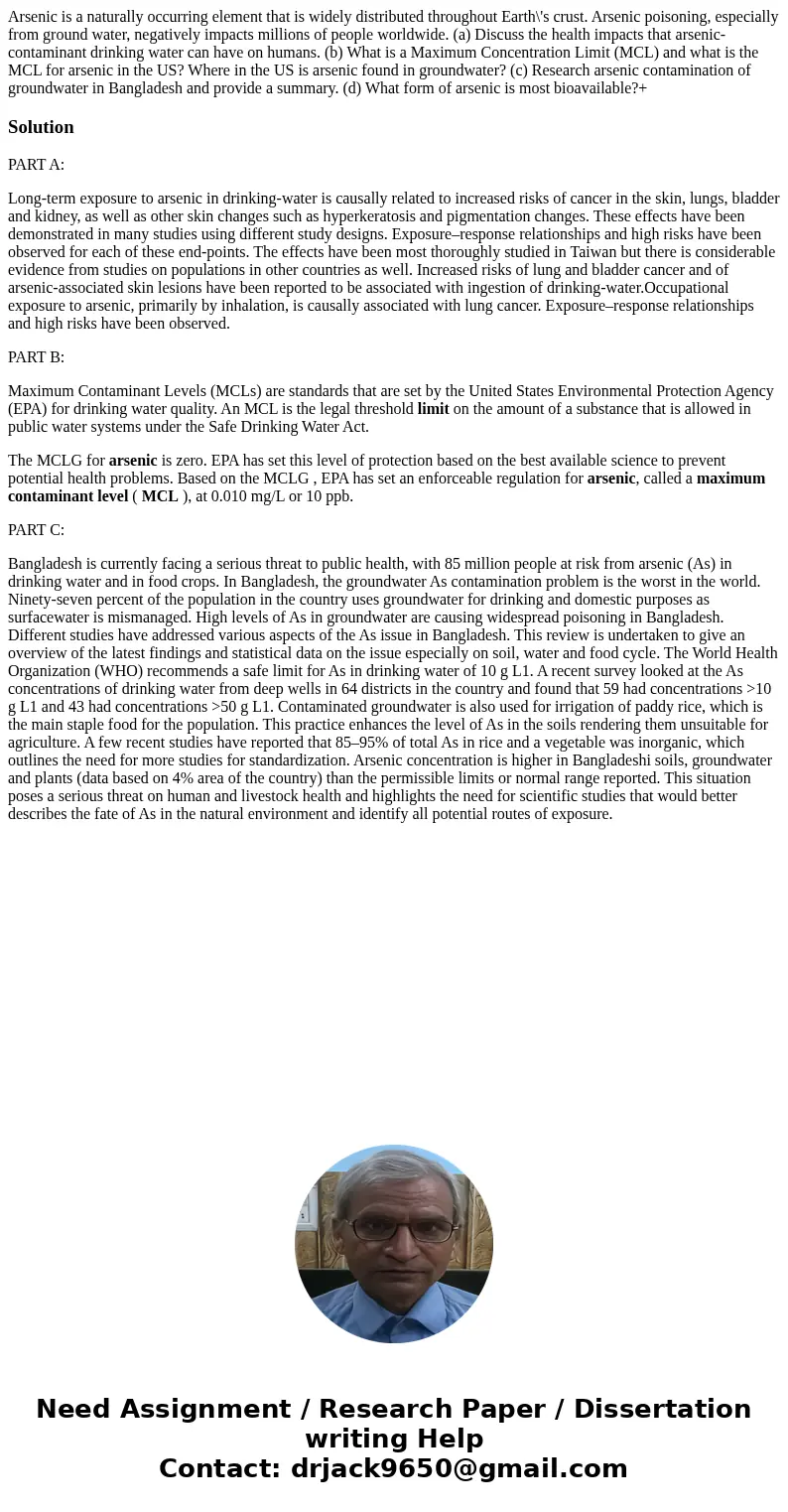Arsenic is a naturally occurring element that is widely dist
Solution
PART A:
Long-term exposure to arsenic in drinking-water is causally related to increased risks of cancer in the skin, lungs, bladder and kidney, as well as other skin changes such as hyperkeratosis and pigmentation changes. These effects have been demonstrated in many studies using different study designs. Exposure–response relationships and high risks have been observed for each of these end-points. The effects have been most thoroughly studied in Taiwan but there is considerable evidence from studies on populations in other countries as well. Increased risks of lung and bladder cancer and of arsenic-associated skin lesions have been reported to be associated with ingestion of drinking-water.Occupational exposure to arsenic, primarily by inhalation, is causally associated with lung cancer. Exposure–response relationships and high risks have been observed.
PART B:
Maximum Contaminant Levels (MCLs) are standards that are set by the United States Environmental Protection Agency (EPA) for drinking water quality. An MCL is the legal threshold limit on the amount of a substance that is allowed in public water systems under the Safe Drinking Water Act.
The MCLG for arsenic is zero. EPA has set this level of protection based on the best available science to prevent potential health problems. Based on the MCLG , EPA has set an enforceable regulation for arsenic, called a maximum contaminant level ( MCL ), at 0.010 mg/L or 10 ppb.
PART C:
Bangladesh is currently facing a serious threat to public health, with 85 million people at risk from arsenic (As) in drinking water and in food crops. In Bangladesh, the groundwater As contamination problem is the worst in the world. Ninety-seven percent of the population in the country uses groundwater for drinking and domestic purposes as surfacewater is mismanaged. High levels of As in groundwater are causing widespread poisoning in Bangladesh. Different studies have addressed various aspects of the As issue in Bangladesh. This review is undertaken to give an overview of the latest findings and statistical data on the issue especially on soil, water and food cycle. The World Health Organization (WHO) recommends a safe limit for As in drinking water of 10 g L1. A recent survey looked at the As concentrations of drinking water from deep wells in 64 districts in the country and found that 59 had concentrations >10 g L1 and 43 had concentrations >50 g L1. Contaminated groundwater is also used for irrigation of paddy rice, which is the main staple food for the population. This practice enhances the level of As in the soils rendering them unsuitable for agriculture. A few recent studies have reported that 85–95% of total As in rice and a vegetable was inorganic, which outlines the need for more studies for standardization. Arsenic concentration is higher in Bangladeshi soils, groundwater and plants (data based on 4% area of the country) than the permissible limits or normal range reported. This situation poses a serious threat on human and livestock health and highlights the need for scientific studies that would better describes the fate of As in the natural environment and identify all potential routes of exposure.

 Homework Sourse
Homework Sourse